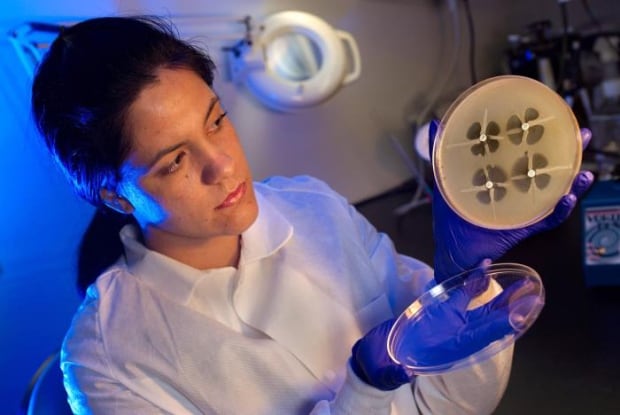Why food recalls may seem more frequent
Consumers may check their pantries more often for recalled foods thanks to advances in DNA technology. It allows disease detectives to spot potential pathogens and piece together outbreak trends.
On Friday, the U.S. Centers for Disease Control and Prevention published a report on foodborne disease based on 10 sites across the country from 2013 to 2016.
“Foodborne diseases continue to be an important problem,” said report author Aimee Geissler, leader of CDC’s FoodNet team in Atlanta.
Campylobacter, often tied to unpasteurized dairy products, caused the most foodborne illnesses last year. It can also be found in contaminated chicken, water and produce.
Salmonella was second, but there was decline in the most common strain, called Salmonella typhimurium. It’s thought the dropoff could be due to a new poultry vaccine for Salmonella typhimurium, Geissler said.
There has also been advances in rapid tests to look for DNA from more than 20 different pathogens at once in patients with diarrheal disease. It’s called culture-independent testing.

The traditional approach of growing up bacterial cultures on a dish is still important to identify those resistant to antibiotics. (Melissa Dankel/CDC)
“The advantages of culture-independent testing are that they are easier to use and they’re quicker,” Geissler said. “Patients and health-care providers can now get results within a couple of hours.”
But it’s not all out with the old. The traditional approach of growing bacterial cultures on a dish still plays important roles, Geissler said, such as:
- To determine if bacteria have certain genes to spread or cause severe disease.
- To monitor disease trends, determine antibacterial resistance and identify the source of an outbreak.
Geissler gave the example of the 2008-2009 Salmonella typhimurium outbreak that was traced to contaminated peanut butter. More than 700 people were infected, including one person who brought tainted food into Canada.
During an outbreak, bacterial cultures “help us know whether this case is linked to that case, which is then linked to the food, because they all have the same molecular pattern,” said Dr. Bryna Warshawsky, a public health physician with Public Health Ontario.
Warshawsky said the current flour outbreak and recall is another instance where the combination of tests came together.
Find the fingerprint
Before culture-independent tests, the E. coli 0121 that led to the flour recall likely would’ve been missed and more people sickened, said Keith Warriner, a professor of food science at the University of Guelph.
“The flour is a good example of this,” Warriner said. “Previously, what probably would’ve happened is you couldn’t culture the E. coli and you wouldn’t be able to detect it and you couldn’t certainly find the fingerprint as we call it to link it to another case. Essentially what that meant only a few years ago was over 50 per cent of all foodborne illnesses got undetected or we couldn’t find what the source was.”
While DNA sequencing now allows bacterial cells to be detected quickly, they don’t show whether the cell is alive or dead, resulting in false positives, Warriner said. He calls it the Achilles’ heel of the technique.
“Last year, for example, there was a record number of recalls done for listeria, and the thing was, the number of actual cases of listeria decreased,” Warriner said.
The food scientist said some people are concerned that culture-independent test results can be interpreted in an overly cautious way.
Warriner said once bacterial cells are detected, no matter how few, common sense and public health practice dictate that the product has to be recalled.